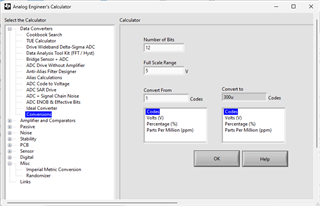Tool/software:
Hi team,
I have a question regarding the datasheet of the ADS8588S.
The offset error temperature can be calculated for 60°C with 3ppm/°C * 60°C * 10000mV = 1.8mV, is that correct?
3ppm/°C max Offset error temperature drift
10000mV = +-5V full scale range
Now to my questions:
1. 1.8mV are the max offset error for +-5V and +-10V. Does it mean that the max offset can be 1.8V over the full temperature and voltage range? So the 3ppm/°C are just valid as long as an offset error is below 1.8mV? Can you please explain shortly why this is this also the max value for the +-10V full scale input range? From my feeling it needs to be doubled.
2. Can I convert the 3ppm/°C in a percentage value?
3. The max ADC offset error for 25°C is then: 3ppm/°C * 25°C * 10000mV = 750uV? Is this correct?
4. How can I calculate the max Gain error? Do we have a max value for the Gain error at 25°C with internal reference? Is it always +-10ppm/°C?
5. Do we have curves for the offset drift and the Gain drift over the full temeprature range?
Best regards
Felix


